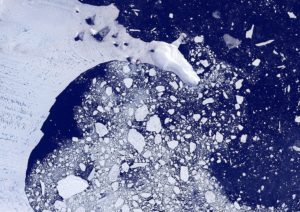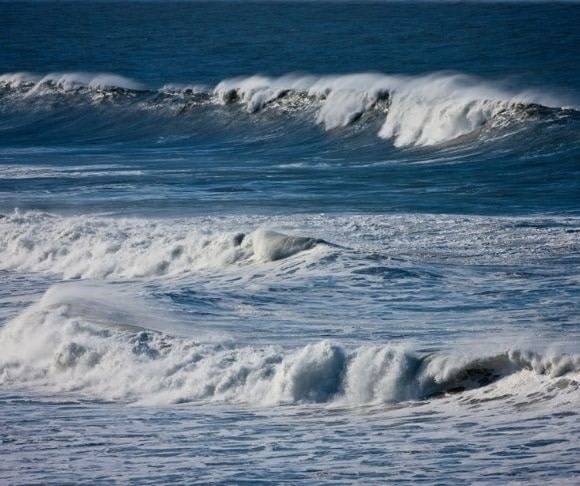A new scientific climate study published in Science shows a result climate computer models do not reproduce. It may have significant implications for the role of humans in global warming.
Atlantification
Modern scientific measurements show that saltwater from the Atlantic Ocean has penetrated the Arctic, causing melting sea ice and rising temperatures. This process is called Atlantification. Climate scientists have all eyes focused on it because their computer models show that increasing CO2 levels from burning fossil fuel causes rapid warming in the Arctic through this mechanism.
However, modern measurements only go back 40 years. A team of scientists set out to reconstruct a history of Atlantification from ocean sediments in the Fram Strait between Greenland and Spitsbergen. They used precisely dated paleoceanographic records based on biomarkers to produce an 800-year record of temperature and salinity change. The result was recently published in the prestigious journal Science Advances.
Co-lead author Dr. Tesi Tommaso from the Institute of Polar Sciences of the National Research Council in Bologna said for most of the record, there was little variability, but “all of a sudden at the start of the 20th century, you get this marked change in temperature and salinity – it really sticks out.”
Too Early
However, at that time, atmospheric CO2 levels were barely above pre-industrial levels. Humans can therefore not be the cause of that sudden spike in Arctic warming. The paper notes the warming coincides with the end of The Little Ice Age, a 500-year-long period in the Northern Hemisphere of freezing winters and cool summers, stating that “understanding of this mechanism will require further investigations using climate model simulations.” That’s science-speak for saying that climate models got it wrong, and although these researchers are polite and careful in their speech, the finding sends shockwaves through climate science.
If the climate models failed to predict this early Atlantification and consequently falsely attributed 20th-century warming to humans, it could mean that the climate skeptics were right all along. They have claimed that greenhouse warming is real but moderate and beneficial.

(Photo by Planet Observer/Universal Images Group via Getty Images)
The trouble for the climate models is compounded by another recent study, also published in Science Advances, which reconstructed atmospheric aerosols from ice cores in Antarctica. Aerosols are important because they explain why the earth has warmed much less than the climate models predict. The models expected 1.5°C warming in the 20th century but recorded only 1.1°C. The missing 0.4°C warming is explained by a substantial increase in aerosols from fossil fuels that cool the earth.
The article “Improved estimates of pre-industrial biomass burning reduce the magnitude of aerosol climate forcing in the Southern Hemisphere” rejects this explanation because no increase in aerosols was observed in the 20th century. That leaves the climate modelers in a pickle because the warming came too early to be caused by humans, and aerosols cannot explain the lukewarm trend.
Major Implications
These findings are not only of academic interest. Tens of trillions of dollars are currently diverted into curbing CO2 emissions globally. These studies suggest that this panic spending is unwarranted. Humans may still affect the climate, but if most of the warming in the 20th century turns out to be natural, we can call off the emergency.
~ Read more from Caroline Adana.








